10 Easy Herb Garden Ideas for Beginners
You do not need a full garden to grow herbs successfully. With the right containers and placement, even the smallest corner can thrive. Fresh herbs can make meals taste better and brighten up your home at the same time. Growing them does not require much effort, just a little planning and patience. If you are ready to dig in, here are some helpful tips to explore.
This post may contain affiliate links, which helps keep this content free. Please read our disclosure for more info.
Windowsill Herb Trays

A simple way to start growing herbs is by lining up small trays or pots along your kitchen windowsill. Choose herbs that enjoy sunlight like basil, thyme, or oregano. The warmth from the window and easy access for watering make it a great spot. Plus, you can snip herbs right before cooking.
You can reuse old mugs or shallow bowls if you do not want to buy new containers. Just make sure there is drainage at the bottom. A small tray underneath will catch any extra water. This setup fits small apartments and tight indoor spaces well.
Mason Jar Herb Garden
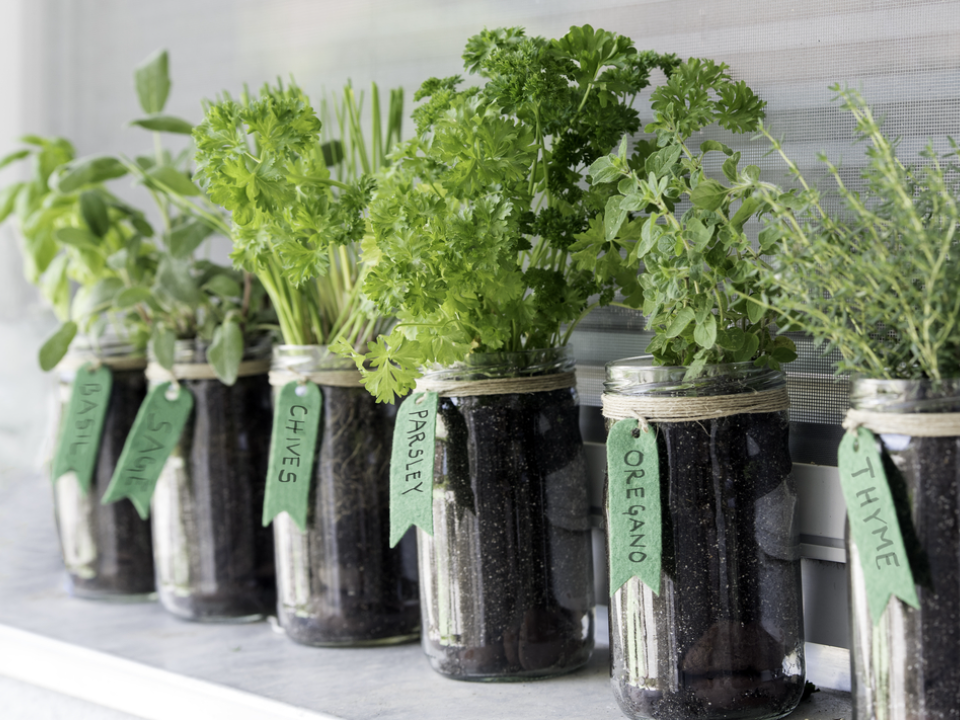
Mason jars offer a neat and compact way to grow herbs indoors. They are easy to find, and you can place them on shelves, counters, or window ledges. Clear glass lets you check moisture levels at a glance. They work best for herbs like mint, parsley, or chives.
Add pebbles or coarse sand at the bottom to help manage drainage. Since jars do not have holes, too much water can be a problem. A spoonful of potting mix and a few seeds go a long way. These jars also add a decorative touch to any kitchen.
Hanging Herb Baskets
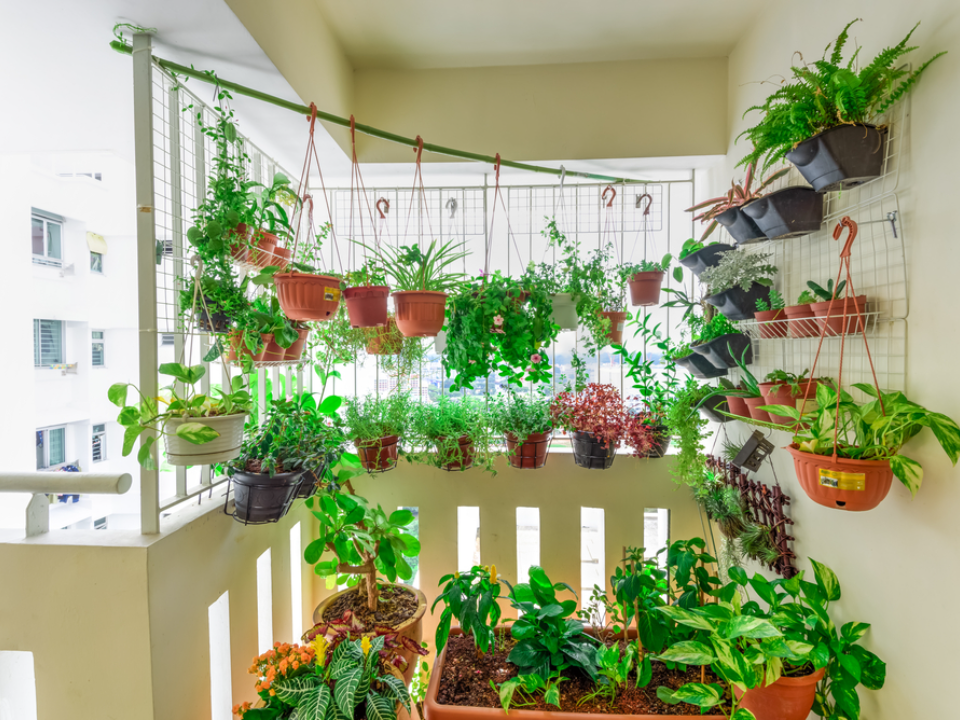
Hanging baskets save floor space while keeping herbs close to sunlight. They work well on balconies, porches, or hooks by a sunny window. You can use coconut liners or fabric pockets to hold soil and seedlings. This method is ideal for trailing herbs like oregano and lemon balm.
Rotate the baskets from time to time so each herb gets even sun exposure. Be mindful of wind if placing them outside. Water them slowly so the soil stays in place. Hanging baskets keep things tidy while offering easy access to your herbs.
Vertical Pallet Garden
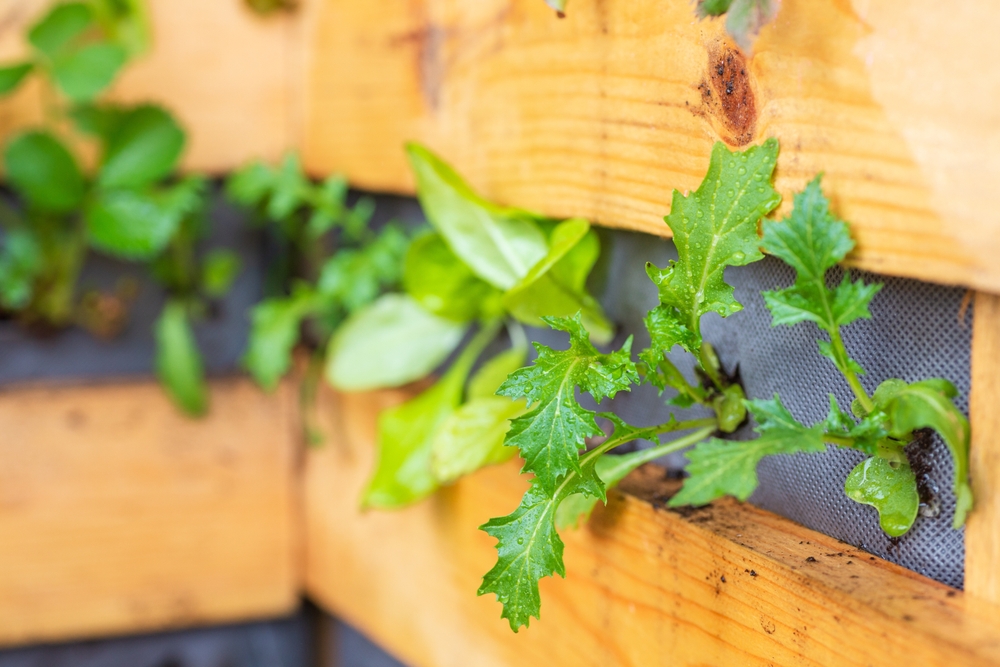
Reclaimed wooden pallets can become a vertical garden with very little effort. Secure landscape fabric to the back and bottom of each pallet level, then fill with soil and plant your favorite herbs. It stands upright and leans nicely against a fence or wall. This works great in narrow outdoor areas.
Label each section so you remember what you planted. Choose sturdy herbs like rosemary or sage that can thrive in tight pockets. Watering from the top allows excess to reach lower levels. The setup is both useful and visually appealing.
Teacup Herb Garden
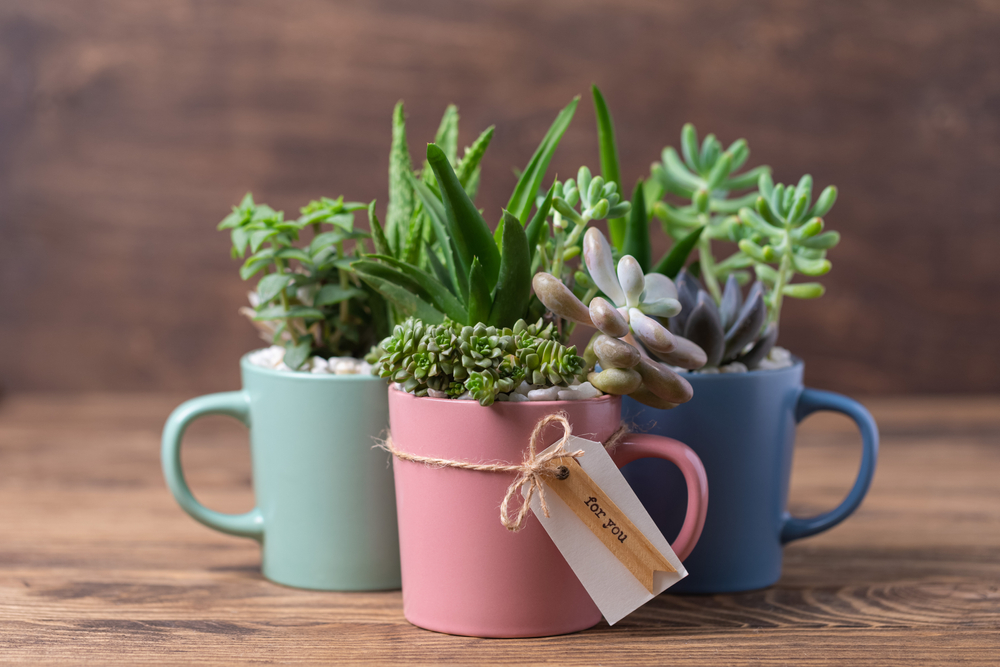
Old teacups make charming containers for small herb plants. Their size keeps herbs tidy and contained, and they look great on tables or ledges. They are perfect for growing small herbs like thyme or micro basil. A little gravel at the bottom helps with drainage.
Use matching sets or mix different patterns for a unique look. Drill a small hole underneath or water carefully to avoid overflow. This is a fun way to repurpose unused china. It adds personality while giving your herbs a proper home.
Raised Bed Herb Garden
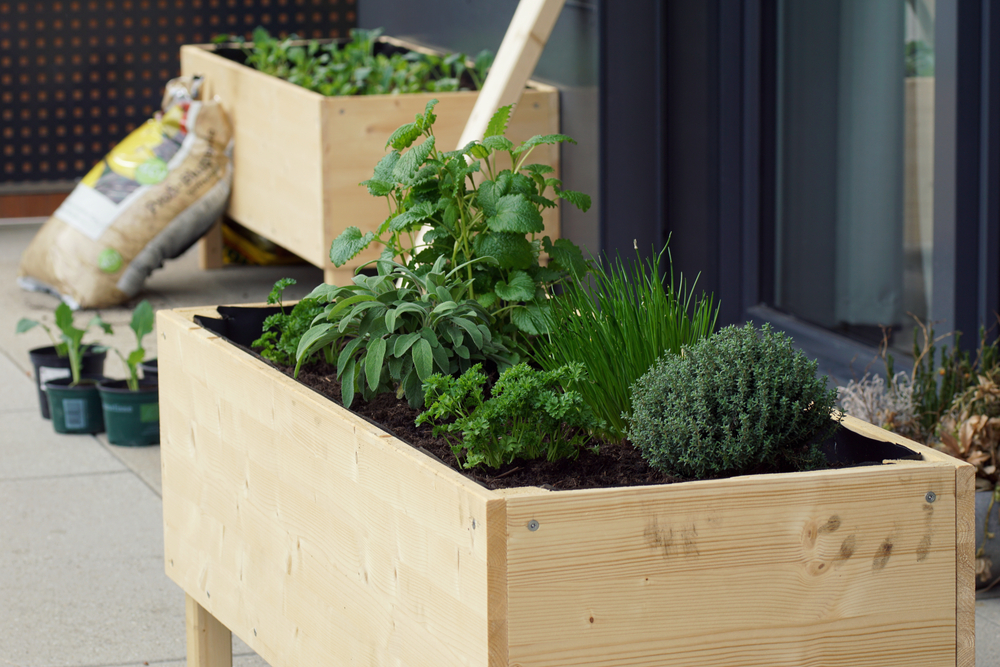
Raised beds offer better control over soil quality and drainage. They are ideal for outdoor spaces and can be built from wood, bricks, or metal frames. Herbs like sage, mint, and parsley thrive in these controlled environments. You can section off parts of the bed for different types.
Position the bed where it gets good sunlight for most of the day. Add compost to keep the soil rich and loose. A short fence around the edge can keep out pets or critters. This layout works well for those who want a slightly larger garden.
Shoe Organizer Planter
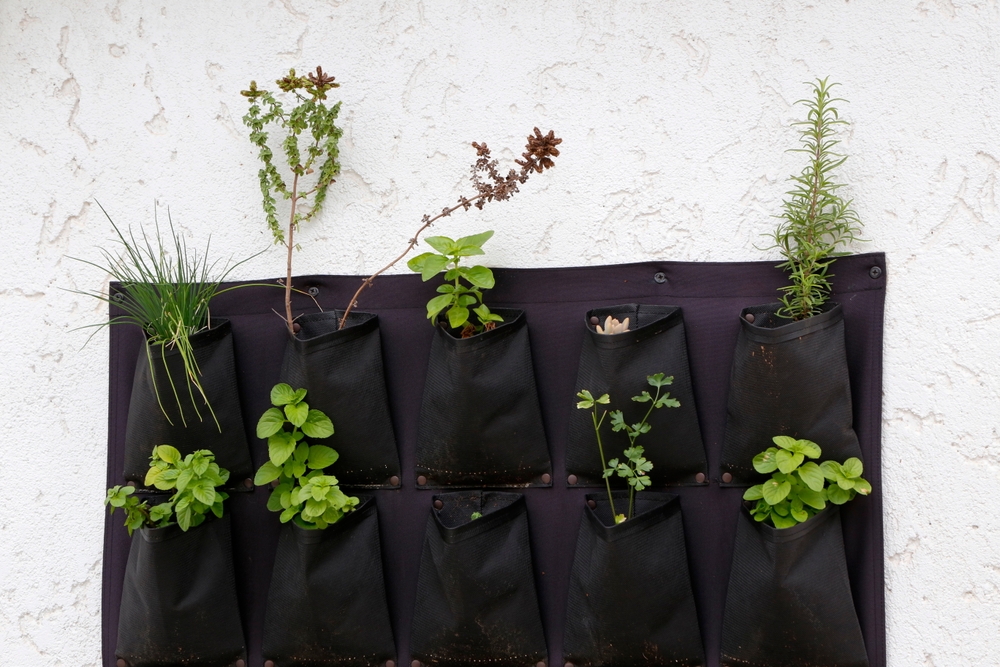
An over-the-door shoe organizer can turn into a space-saving vertical herb garden. Fill each pocket with soil and place herb seeds or seedlings inside. Hang it on a wall, fence, or balcony rail that gets enough light. It is best suited for lightweight herbs like cilantro, parsley, and dill.
Punch a few drainage holes in the bottom of each pocket. Water gently so the soil stays in place. Keep a small watering can nearby for quick care. This option is great for renters or those with limited outdoor space.
Indoor Grow Light Setup
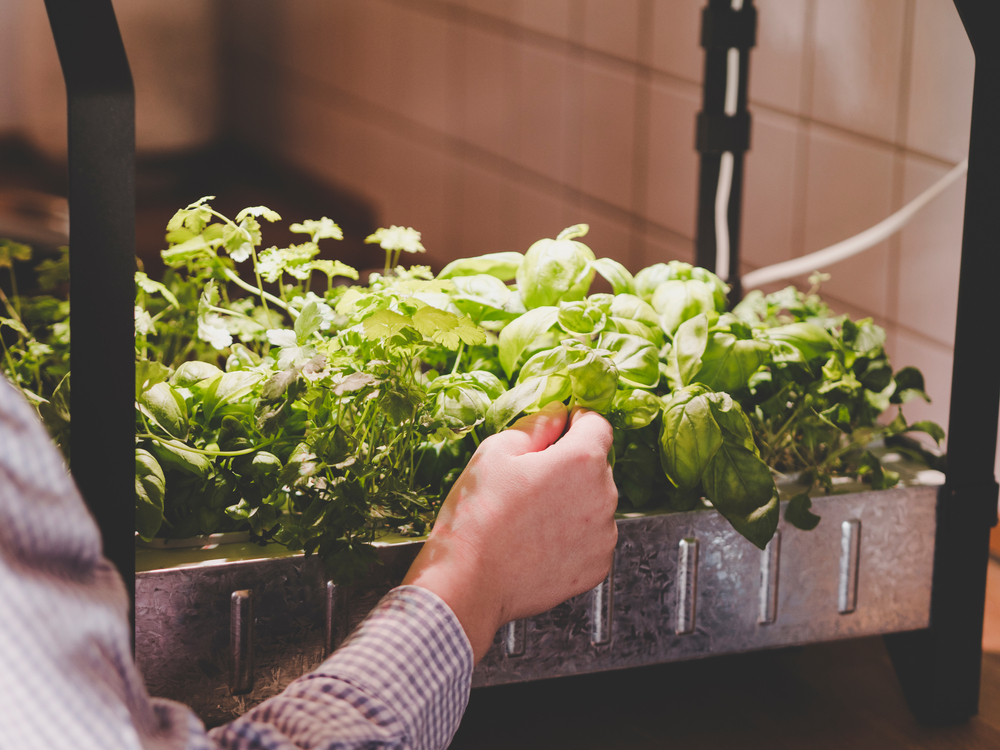
If natural light is limited, adding a small grow light helps keep your herbs healthy indoors. Choose LED grow lights that are gentle on plants and energy-efficient. Herbs like basil, parsley, and chervil respond well to indoor lighting. Keep the light on for about 12 hours a day.
Place the herbs under shelves or in a corner where the light can reach evenly. Use a timer to maintain a steady schedule. Pair this setup with small pots or trays that are easy to clean. It allows you to grow fresh herbs even during cloudy seasons.
Recycled Tin Can Planters
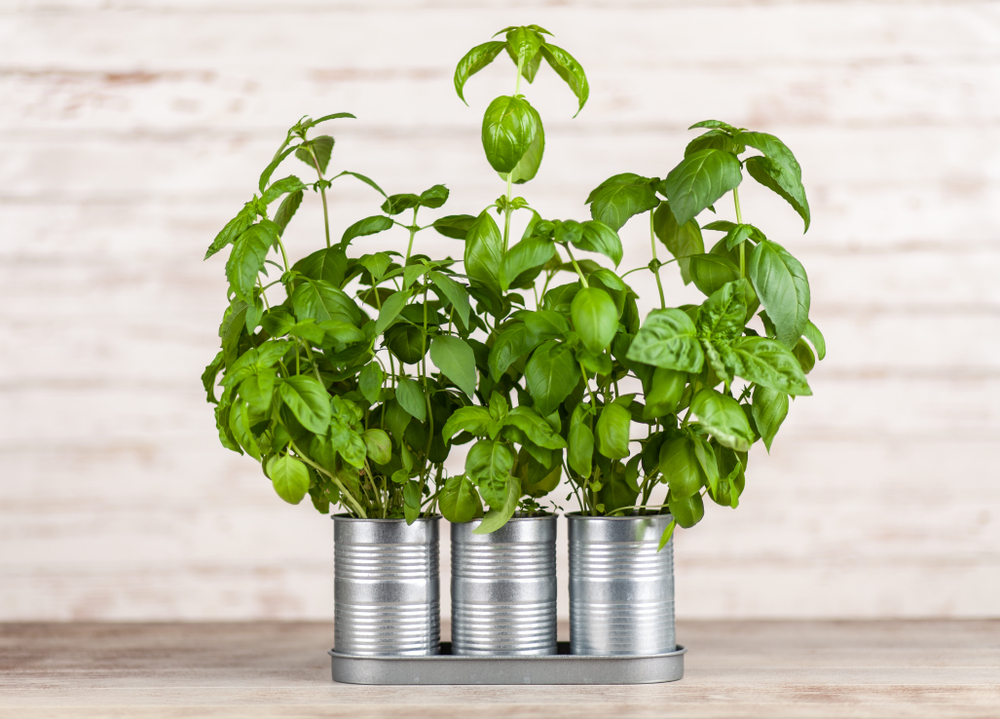
Empty tin cans can be cleaned, painted, and reused as herb containers. They are perfect for starting small herb plants like basil, chives, or dill. Add drainage holes at the bottom and fill them with potting mix. These cans are light, compact, and easy to move.
Arrange them on a windowsill, shelf, or patio table for easy access. You can tie labels around them or write directly on the surface. They offer a great way to reduce waste while growing something useful. This method keeps things low-cost and creative.
Kitchen Counter Herb Station
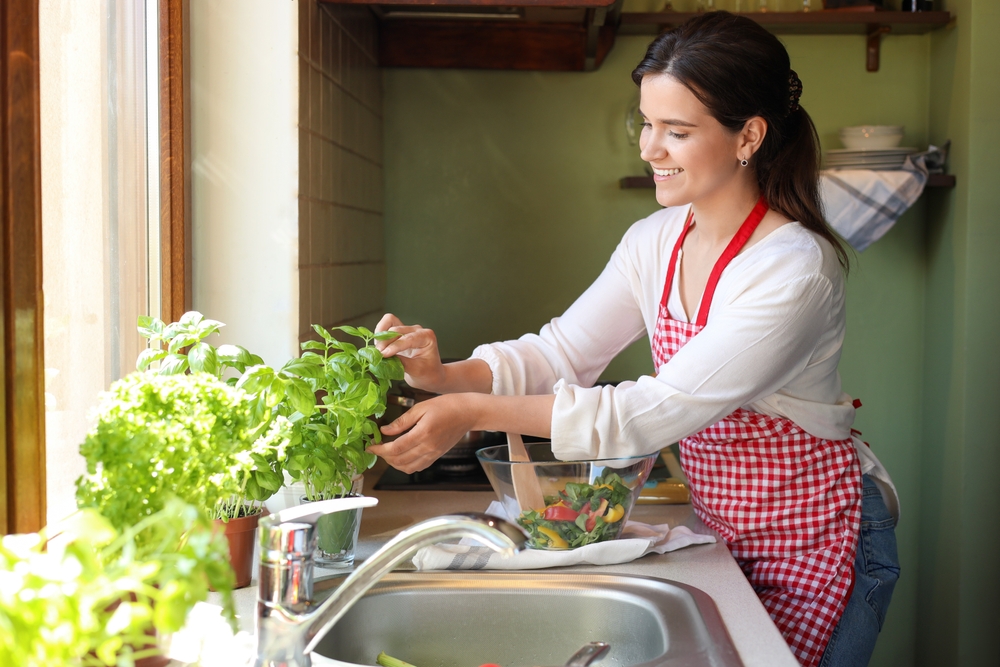
Set up a small corner on your kitchen counter just for herbs. Use three or four small pots placed near a sunny window for best results. Pick herbs that you cook with often, like basil, thyme, or parsley. Keep a small spray bottle nearby for quick watering.
This setup keeps herbs within arm’s reach while you prepare meals. Choose pots that match your kitchen style for a clean look. Rotate them once a week to give each side enough light. A kitchen herb station helps you enjoy fresh flavor daily.
This article originally appeared on Avocadu.
